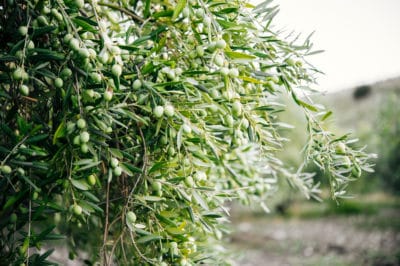Different Types of Olives
Most people are familiar with green and black olives, but these differences in color are not due to a difference in tree variety. The high-fat fruit of the olive tree always starts out green and later turns black if left on the tree long enough, whichever of the hundreds of varieties of olive tree it is growing on.
Olives cannot be eaten fresh from the tree. They must undergo a curing process which takes weeks to months complete before they are edible. If you grow olive trees in your backyard or harvest them from someone else’s tree, you can cure green or black olives yourself at home.
The trees producing olives, while all of the same species Olea europaea, come in hundreds of different cultivars. These cultivars differ from one another in:
- Flavor
- Fat content
- Size of tree
- Size of fruit
- Texture of fruit
- Climate where they grow best
- Susceptibility to pests and diseases
While most varieties of olive grow best in locations with dry, warm summers and mild, wet winters of climate zones 10 and 11, there are a few types which can be grown in zones 8 and 9.
The Trees Olives Grow On
A few varieties of the olive tree start fruiting after three years, but most cultivars take 5 to 12 years before they start producing fruit. But once they do, they can go on doing it for centuries.
Olive trees are astonishingly hardy and long-lived. There is an olive tree on the island of Crete estimated to be over 3,000 years old – and it still produces delicious olives! Many other productive trees are hundreds of years old.
Olive trees are a small, evergreen tree with many types reaching an ultimate height of only 15 to 20 feet (4.6 to 6 meters). Some varieties and individual trees get as tall as 40 feet (12 meters). An olive tree’s ultimate size and productivity are affected by the care it receives as well as the characteristics of the cultivar.
